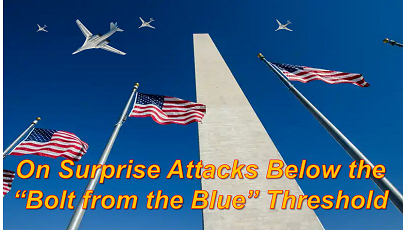[Editor’s Note: Army Mad Scientist is pleased to feature today’s guest blog post — the close runner-up submission from our Fall / Winter Writing Contest — by Lesley Kucharski, Counterproliferation Analyst at Lawrence Livermore National Laboratory. Her Back to the Future-themed piece employs Imperial Japan’s attacks on U.S. forces in Hawaii and the Philippines on December 7 and 8, 1941, to explore the efficacy of surprise attacks below the “bolt from the blue” threshold in the contemporary multipolar and multidomain security environment. As we’ve seen in Ian Sullivan‘s informative wargaming posts, from the tyranny of time and distance encountered by the U.S. Joint Force when responding to a Chinese surprise attack to seize Taiwan, to the critical role competition and crisis (with associated early warning) played in enabling the U.S. and NATO to forward deploy and thwart a Russian tactical surprise attack into the Baltic States and Poland — first mover advantage is ignored at our peril! The US, our allies, and partners would be wise to heed Ms. Kucharski’s advice, eschew “wishful thinking about deterrence,” and “avoid a poverty of expectations by seeking to understand and prepare for surprise contingencies.” As events continue to unfold in Ukraine, our adversaries around the globe are watching and learning — Read on!]
Reflecting in the early 1960s on the reasons why the United States was surprised by the Japanese attacks on Pearl Harbor and the Philippines in 1941,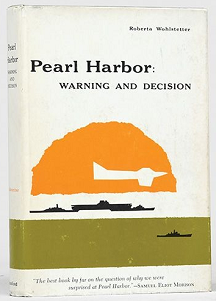 Roberta Wohlstetter characterized the potential effectiveness of the surprise attack as significantly increased due to the development of nuclear weapons. In Pearl Harbor: Warning and Decision, she posited that the first mover who can surprise the adversary has the advantage under the nuclear shadow, “for it is feasible with contemporary weapons for a series of opening clashes with the forces-in-being to decide the outcome of a war.”1
Roberta Wohlstetter characterized the potential effectiveness of the surprise attack as significantly increased due to the development of nuclear weapons. In Pearl Harbor: Warning and Decision, she posited that the first mover who can surprise the adversary has the advantage under the nuclear shadow, “for it is feasible with contemporary weapons for a series of opening clashes with the forces-in-being to decide the outcome of a war.”1
Although Wohlstetter considers events that occurred over 80 years ago through the Cold War lens of the early 1960s, she leaves the reader with much food for thought about contemporary defense and deterrence debates. Thankfully, changes to the U.S. nuclear force structure since the early Cold War, including the development and modernization of the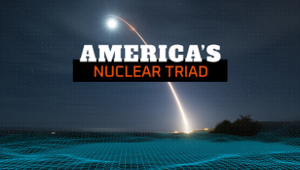 triad, have abated fears about the worst-case “bolt from the blue” surprise scenario, i.e., an unforeseen and all-out disarming nuclear first strike. However, there are new complications to surprise scenarios one might envision below the threshold of the unlikely worst-case scenario: The nuclear shadow now arches across a multipolar and multidomain security environment. Do these new complications fundamentally alter the concern about the efficacy of the surprise attack, whether that attack is nuclear or non-nuclear? Or does Wohlstetter’s formula for the problem remain relevant?
triad, have abated fears about the worst-case “bolt from the blue” surprise scenario, i.e., an unforeseen and all-out disarming nuclear first strike. However, there are new complications to surprise scenarios one might envision below the threshold of the unlikely worst-case scenario: The nuclear shadow now arches across a multipolar and multidomain security environment. Do these new complications fundamentally alter the concern about the efficacy of the surprise attack, whether that attack is nuclear or non-nuclear? Or does Wohlstetter’s formula for the problem remain relevant?
Wohlstetter provides guidance in seeking answers to these questions. Pearl Harbor: Warning and Decision is full of lessons about assessing the intentions, risk tolerance, and capabilities of potential adversaries as well as oneself that are applicable when considering the efficacy of surprise attacks below the “bolt from the blue” threshold in the contemporary security environment. In the book’s forward, Thomas Schelling collectively describes these lessons as a “poverty of expectations,” which he defines as “a routine obsession with a few dangers that may be familiar rather than likely.”2 Drawing from Wohlstetter’s research and analysis, this essay highlights a few of those lessons and considers their relevance in the contemporary security environment.
1941: “A poverty of expectations”
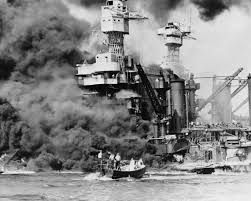
The Japanese attacks on Pearl Harbor and the Philippines demonstrate the poverty of expectations bias of mirror imaging, i.e., projecting one’s own values, perceptions, and capabilities onto another. While drawing conclusions and insights in the final chapter, Wohlstetter remarks: “It gives one pause to contemplate how slightly the future acted as a curb on this particular aggressor.”3 In the long-term perspective, Japan faced a significant capability gap with the United States that was mutually perceived by both countries. U.S. intelligence and policy officials assumed that this long-term outlook would make Japan avoid direct confrontation with the United States. The alternative that a less powerful state would attack the United States directly was unthinkable, particularly against the backdrop of a three-pronged deterrence policy involving U.S. embargoes, the fleet at Pearl Harbor, and military reinforcements to the Philippines. Yet, Japanese policymakers decided that war was a more acceptable risk than abandoning expansionist national objectives.4 These differing values and deterrence and threat perceptions led Japan to utilize its short-term capability advantage by seizing the initiative early in conflict with surprise attacks on Pearl Harbor and the Philippines before its window of operational advantage closed.
On assessing oneself, the surprise attacks at Pearl Harbor and the Philippines are a case study of various policy and resource prioritization challenges in a multipolar threat environment. With limited resources, U.S. policy officials prioritized threats emanating from across the Atlantic in Europe.5 This generated a poverty of expectations bias in analyses about threats from across the Pacific in Japan, with Japanese developments viewed primarily through the lens of developments in Europe, and other signals interpreted as noise. For example, there was a popular assessment that Japan would attack the Soviet Union after Germany invaded from the west. This conception remained popular despite intelligence showing that Japan was concentrating forces in the south. An alternative popular assessment was that Japan would continue attacking European interests in the southern direction, building upon its invasions of French Indochina in 1940 and 1941. It was unthinkable that Japan would attack the United States at Pearl Harbor and the Philippines before doing so against the British or Dutch in the region.
European policy prioritization also left those working on the Japan portfolio with limited resources and influence, leading to the poverty of expectations bias of wishful thinking about deterrence. The fleet at Pearl Harbor was viewed by U.S. officials as a deterrent rather than a threat and target to Japan, in part because limited resources and European prioritization made such an interpretation preferable.6 From 1940 to early 1941, the debate about the fleet was focused primarily on whether to move it toward South America, where German influence was increasing, or the Atlantic.7 Against this backdrop, inertia and wishful thinking about deterring Japan were the guiding forces that kept the fleet at Pearl Harbor. As 1941 progressed and Japan moved against European and Chinese interests, Pearl Harbor was viewed by U.S. officials primarily as a steppingstone for sending reinforcements to the Philippines that the Japanese could not and would not touch. Locally at Pearl Harbor, the Army and Navy had to use their limited resources to balance local counter-sabotage requirements with their role in training reinforcements that were being sent to the Philippines. Wohlstetter shows that this delicate balancing act contributed to the lack of warning.
Back to the future
How do these lessons from 1941 help answer our questions about the efficacy of surprise attacks below the “bolt from the blue” threshold in the contemporary multipolar and multidomain security environment under the nuclear shadow?
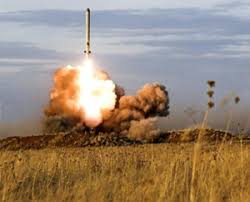
It is important to challenge the temptation to mirror image when considering how potential adversaries interpret the role of surprise nuclear or non-nuclear attacks below the threshold of the “bolt from the blue” scenario. While historical experience may have led the United States to develop a clear distinction between a surprise attack and seizing the initiative early in conflict, it is not clear whether potential adversaries share this perception. For example, the debate about Russia’s escalation management strategy suggests that nuclear weapons undergird and may have a role in Russian efforts to seize the initiative early in conflict. Would Russian nuclear use in certain scenarios come as a surprise, and would Moscow intend for such use to be a surprise? What is the state of the debate in Beijing on seizing the initiative early and the role of nuclear or non-nuclear surprise attacks below the “bolt from the blue” threshold? What about in Pyongyang? It may be the case that potential adversaries with certain non-nuclear and nuclear capabilities are even less curbed by the future than Japan was in 1941. The United States should avoid a poverty of expectations by seeking to understand and prepare for surprise contingencies, even if it views them as escalatory and mutually undesirable.
The lessons from 1940-1941 on mirror imaging deterrence and threat perceptions are also relevant to the contemporary security environment. The ongoing conflict in Ukraine, for example, demonstrates differing perceptions between Russia, on the one hand, and Ukraine as well as across the larger 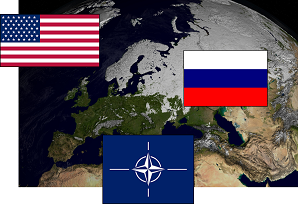 transatlantic and European security architectures in which it sits, on the other hand. It is prudent to avoid a poverty of expectations by considering how these differences could lead to conflict escalation, including through surprise attacks, especially at a time when Russia is communicating political and military signals that demonstrate high stake and resolve, even if its intentions are unclear. More generally, the United States and its allies should consider how differing deterrence and threat perceptions might impact the strategic calculus of potential adversaries who might strive to seize the initiative early in conflict and consider surprise attacks below the threshold of the “bolt from the blue” scenario.
transatlantic and European security architectures in which it sits, on the other hand. It is prudent to avoid a poverty of expectations by considering how these differences could lead to conflict escalation, including through surprise attacks, especially at a time when Russia is communicating political and military signals that demonstrate high stake and resolve, even if its intentions are unclear. More generally, the United States and its allies should consider how differing deterrence and threat perceptions might impact the strategic calculus of potential adversaries who might strive to seize the initiative early in conflict and consider surprise attacks below the threshold of the “bolt from the blue” scenario.
 As the United States adapts its defense and deterrence posture to align with its prioritization of China as the “pacing threat,” it should bear in mind the analytic biases that can develop from policy prioritization challenges under resource constraints. It is important to resist assessing other challenges solely through the lens of China by considering, for example, how Moscow and Pyongyang perceive their own security environments regardless of, as well as in relation to, U.S. policy and posture adaptations with respect to China. Actions taken by other potential adversaries that seem unthinkable against the backdrop of the “pacing threat” may not be unlikely. This framework is useful when thinking about Russia’s military build-up on the border with Ukraine.
As the United States adapts its defense and deterrence posture to align with its prioritization of China as the “pacing threat,” it should bear in mind the analytic biases that can develop from policy prioritization challenges under resource constraints. It is important to resist assessing other challenges solely through the lens of China by considering, for example, how Moscow and Pyongyang perceive their own security environments regardless of, as well as in relation to, U.S. policy and posture adaptations with respect to China. Actions taken by other potential adversaries that seem unthinkable against the backdrop of the “pacing threat” may not be unlikely. This framework is useful when thinking about Russia’s military build-up on the border with Ukraine.
The mistakes made by U.S. officials in 1940-1941 with respect to viewing comparative advantages as assured deterrence solutions to prioritization challenges are also relevant to the contemporary security environment. The analytic biases that led U.S. officials to wishful thinking about deterrence in that time period have not gone away, although the United States has thankfully adapted in order to mitigate them. In contrast to 1941, the United  States now has a global network of alliances that are designed to tackle these challenges across multiple regions and domains. While this alliance structure is a comparative political and military advantage over potential adversaries, its assurance requires time-consuming coordination, as demonstrated by NATO’s gradual policy and posture evolution since Russia annexed Crimea in 2014. Moreover, it is crucial to examine ways in which potential adversaries may view U.S. alliance structures as threats rather than deterrents. Russia’s increasingly hostile rhetoric blaming the United States and NATO for the conflict in Ukraine can be viewed through this lens.
States now has a global network of alliances that are designed to tackle these challenges across multiple regions and domains. While this alliance structure is a comparative political and military advantage over potential adversaries, its assurance requires time-consuming coordination, as demonstrated by NATO’s gradual policy and posture evolution since Russia annexed Crimea in 2014. Moreover, it is crucial to examine ways in which potential adversaries may view U.S. alliance structures as threats rather than deterrents. Russia’s increasingly hostile rhetoric blaming the United States and NATO for the conflict in Ukraine can be viewed through this lens.
Summing up, Wohlstetter’s formulation for the threat of the surprise attack remains relevant. Although history demonstrates that surprise nuclear or non-nuclear attacks between nuclear powers akin to the Japanese attacks on Pearl  Harbor and the Philippines in 1941 have not occurred, this observation should not be taken for granted. Failure to consider surprise attacks below the unlikely “bolt from the blue” threshold could be a grave poverty of expectations in the changed and changing multipolar and multidomain security environment under the nuclear shadow.
Harbor and the Philippines in 1941 have not occurred, this observation should not be taken for granted. Failure to consider surprise attacks below the unlikely “bolt from the blue” threshold could be a grave poverty of expectations in the changed and changing multipolar and multidomain security environment under the nuclear shadow.
If you enjoyed this post, explore the U.S. Army’s single consistent OE narrative (spanning the near, mid-, and far terms out to 2050) further in:
TRADOC Pamphlet 525-92, The Operational Environment and the Changing Character of Warfare; The Operational Environment (2021-2030): Great Power Competition, Crisis, and Conflict comprehensive paper and blog post; and Threats to 2030 video
The Future Operational Environment: The Four Worlds of 2035-2050, the complete AFC Pamphlet 525-2, Future Operational Environment: Forging the Future in an Uncertain World 2035-2050, and associated video
… and check out the following related content:
“No Option is Excluded” — Using Wargaming to Envision a Chinese Assault on Taiwan and Would You Like to Play a Game? Wargaming as a Learning Experience and Key Assumptions Check by Ian Sullivan
Why the Next “Cuban Missile Crisis” Might Not End Well: Cyberwar and Nuclear Crisis Management by Dr. Stephen J. Cimbala
The Classified Mind – The Cyber Pearl Harbor of 2034 by proclaimed Mad Scientist Dr. Jan Kallberg
“The Tenth Man” — War’s Changing Nature in an AI World by Dr. Peter Layton
Are We Ready for the Post-digital Hyper-war? by Capt Martin Crilly, British Army
Some Thoughts on Futures Work (Part I) by Dr. Nick Marsella
About the Author: Lesley Kucharski is a Counterproliferation Analyst at Lawrence Livermore National Laboratory. The views expressed here are her personal views and should not be attributed to her employer or its sponsors.
Disclaimer: The views expressed in this blog post do not necessarily reflect those of the U.S. Department of Defense, Department of the Army, Army Futures Command (AFC), or Training and Doctrine Command (TRADOC).
1 p. 387
2 p. viii
3 p. 387
4 p. 353
5 p. 273
6 pp. 228-233
7 pp. 166-169

